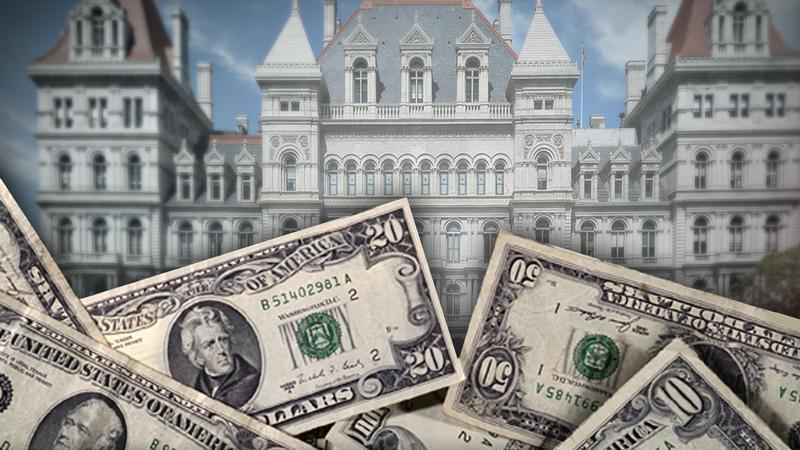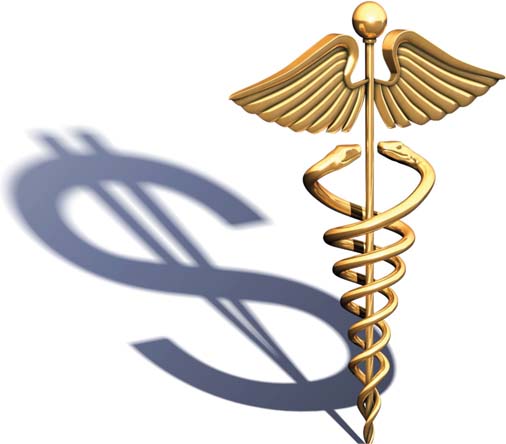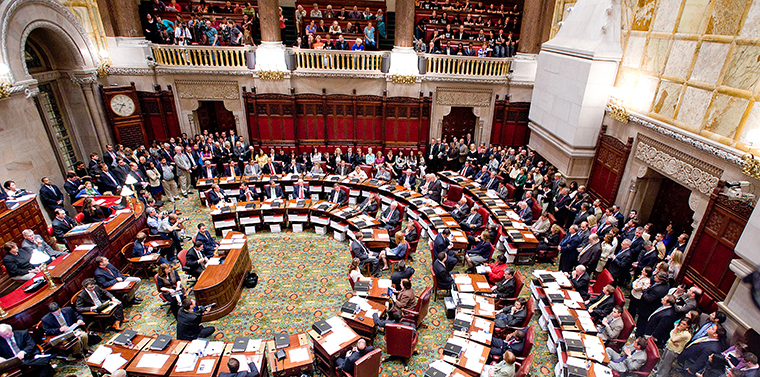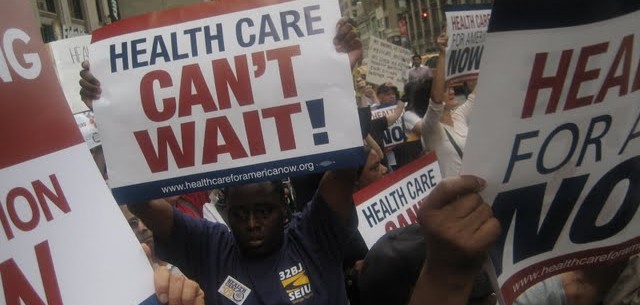Despite health care being a top-tier issue for voters in last fall’s elections, no major new initiatives were included in the final New York State 2019-20 budget enacted by the Legislature and Governor at the end of March. The only significant actions taken were to codify provisions of the federal Affordable Care Act (ACA) in state law (up to now it’s existed merely under an Executive Order), and rejecting a proposed cut to a scheduled increase in Medicaid reimbursement rates to hospitals for in-patient services (a move long overdue since rates hadn’t increased in almost a decade.) While both these steps were sound, much else was left undone. Otherwise, it was pretty much just a maintenance of the status quo.

Here’s a run-down of what did and didn’t get included:
Expanding and Improving Insurance Coverage:
Most disappointing was the fact that no major initiatives were included to offer new health insurance options to a) immigrants who lack them, b) make health insurance more affordable to buy and/or to use, and c) reach out to those who remain uninsured and get them enrolled. In particular, advocates were promoting the ideas of 1) expanding the state’s very successful Essential Plan to undocumented immigrants using state-only dollars (the program’s current funding is mostly federal), 2) allowing moderate-income people to buy-in to the Essential Plan if they want, and 3) offering additional premium subsidies to people who currently receive federal ones and/or to those who don’t qualify for federal ones because their income is too high.
Consumer Assistance and Outreach:
ACA Navigators –The program was reauthorized for another 5 years, but with no increased funding to provide a cost-of-living increase since it was set up 5 years ago. Consequently, community-based, non-profit organizations who comprise the program are now having to raise separate funds from private sources to account for cost increases such as raises in the state’s minimum wage. This program enrolls people into coverage through Medicaid, the Essential Plan, and private Qualified Health Plans offered on the state’s New York State of Health exchange marketplace.
Community Health Advocates (CHA) – Funding for the state’s officially-designated consumer assistance program was also flatlined, again with no cost-of-living increases since its creation at the beginning of this decade. CHA is a wildly successful and well-respected ombuds program that helps consumers and patients with all kinds of health care and insurance problems. Like the Navigator program, CHA is comprised of a statewide network of local community-based non-profit groups, and is anchored by the Community Service Society, Legal Aid Society, Medicare Rights Center, and Empire Justice Center. (Got a problem? Contact them!)
Enrollment Outreach – New York has done remarkably well in implementing the ACA, such that our uninusrance rate is now less than 5% generally, and less than 2% for children and adolescents. Those who remain uninsured are either a) immigrants who have few options beyond Emergency Medicaid, b) eligible for current coverage programs but for some reason who are not yet enrolled, or c) believe they cannot afford to buy coverage given their family income and don’t qualify for public programs. One good way to help all these people out is to reach them through trusted grassroots community groups who are often small and operate on subsistence budgets. Unfortunately, the Legislature and Governor rejected calls to create a funding stream for these groups to undertake basic community outreach and education, and help get those still-uninsured to Navigators and other enrollers.

Health Care Delivery:
Charity Care Funding – Since the enactment of the ACA, the state has been required to revamp the formula by which it allocates funds from its Indigent Care Pool (ICP) to hospitals that treat large numbers of uninsured and Medicaid patients, because the pool includes funds from the federal Disproportionate Share Hospital (DSH) program. Previously, a lot of this money went to some hospitals that treated few such patients or outright refused to admit them other than in an emergency room during a medical emergency. A transition has been underway, but the final stage of complete changeover has been delayed for several years now.
In last year’s budget, a multi-stakeholder workgroup was created by the Department of Health to develop proposals to complete the transition. A subset of the group’s participants comprised of consumer and community advocates and public hospitals produced a set of recommendations, but nothing official was recommended by the Department. In this year’s budget, absent any positive action, the last vestige of the old formula was scheduled to automatically sunset, and the Governor’s initial budget proposal was silent on the matter. However, in the final budget, the status quo was continued for another year with no phase-out.
Public Health Services – Article 6 of the state’s Public Health Law provides funding to cities and counties for core public health services for populations with special health care needs. This year, out of nowhere, a $60 million cut was imposed just on New York City, but no similar cuts affecting any other localities. These cuts will mean less state funding to New York City for prevention and treatment programs for HIV/AIDS, hepatitis, tuberculosis, sexually-transmitted infections, maternal and child health programs, children’s health clinics and school-based health programs, and public hospital clinics.
Safe Staffing — For years, unions representing nurses in hospitals and nursing homes have called for the state to mandate minimum staff ratios per patient, by department, to assure adequate care and quality of care. The budget calls for the Department of Health to convene a multi-stakeholder workgroup to study the issue and develop recommendations, with a formal report due by the end of the calendar year.
Other relevant issues:
Tax Revenue – Time after time, year after year, advocates on many issues push for good ideas, only to be told by lawmakers that “there’s not enough money.” Meanwhile, over several decades now, taxes have been cut at both the federal and state level for large corporations, special industries, and wealthy individuals and families. With the new political landscape in Albany this year, many health and social service advocates were hopeful that these trends could be significantly reversed to provide more funding for needed programs, restore funding cuts from previous years, and to improve overall “tax fairness”. Ideas promoted by economic justice advocates included an “ultra-millionaires” tax, a “pied-a-terre” tax, a “mansion tax”, and a “carried interest” tax.

In the final budget, the current millionaires tax was renewed but not expanded, an internet sales tax was created, along with a new “congestion pricing” tax for driving into lower Manhattan (begins in 2021), and a new tax on purchases of luxury residential real estate (valued at $25 million or more.) Also, annual local property tax increases outside of New York City were capped at 2%.
Overall spending growth – Since taking office in 2011, Governor Cuomo has aimed to limit year-to-year budget increases to 2%, a figure which is totally arbitrary. The Legislature has always accepted his policy and never challenged it, despite higher trends in overall economic growth and tax receipts.

Fair Elections – The budget authorized the creation of a public financing of elections program. The program will fund a “small donor matching” system for all statewide and legislative offices (Governor, Comptroller, Attorney General, Senate, Assembly.) A formal commission was created to develop proposals regarding eligibility thresholds, financing limits, contribution limits, large donor limits, and fusion voting rules. Commissioners will be appointed by the Governor and majority and minority legislative leaders. Their recommendations are due by December 1, 2019 and will go into effect within 20 days unless amended or rejected by the full Legislature.
This new campaign finance system will dramatically transform who runs for office on what issues and promises, and who is able to get elected. New York City has had such a system for two decades and many more community-based and community-focused officials have been elected. They have enacted many progressive policies on health care and other human service and social justice issues. In recent years, Suffolk County has also created such a program.
What’s next:
The Legislature will remain in session through late June before adjourning for the year, so there’s still a chance that some of the “left undone” measures could still pass as stand-alone policy bills, with an eye toward teeing them up for next year’s budget process in terms of actual funding. These issues include:
- protecting and expanding coverage for immigrants.
- codifying the CHA program in statute.
- finishing the transition to a new and better/fairer formula for distributing charity care funding to hospitals.

Other issues we’ll be promoting concern:
- strengthening the state’s “Certificate of Need” oversight process for hospital mergers, downsizing, curtailing of specific services, and outright closures.
- expanding consumer protections against out-of-network surprise medical bills.
- requiring health insurers to maintain existing provider networks and prescription drug formularies during a given plan year.
- requiring pharmacy benefit managers (PBMs) to disclose subcontracts and possible conflicts of interest
- advancing the New York Health Act along the legislative process.
We invite you to join in with us and our Health Care for All New York partners on one or more of the above matters. Please contact us about any you might be interested in.
